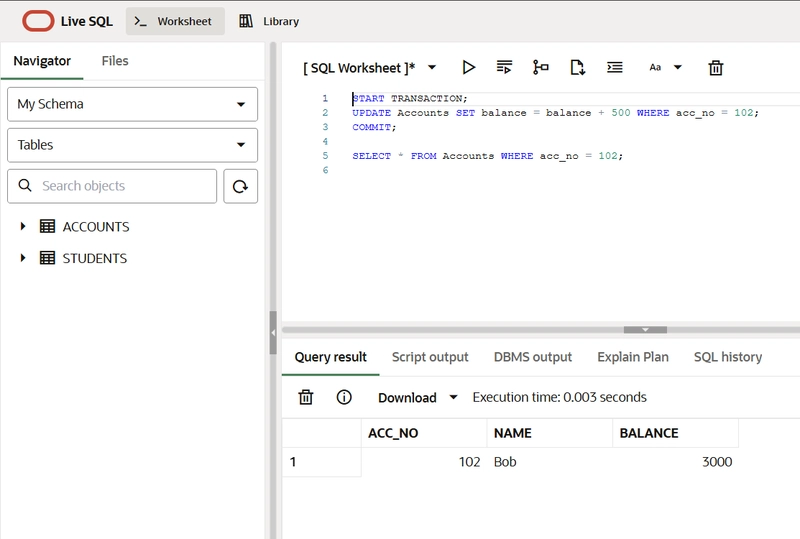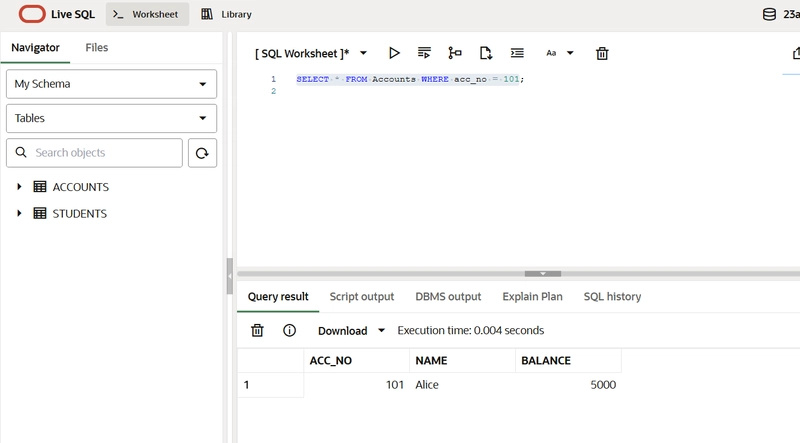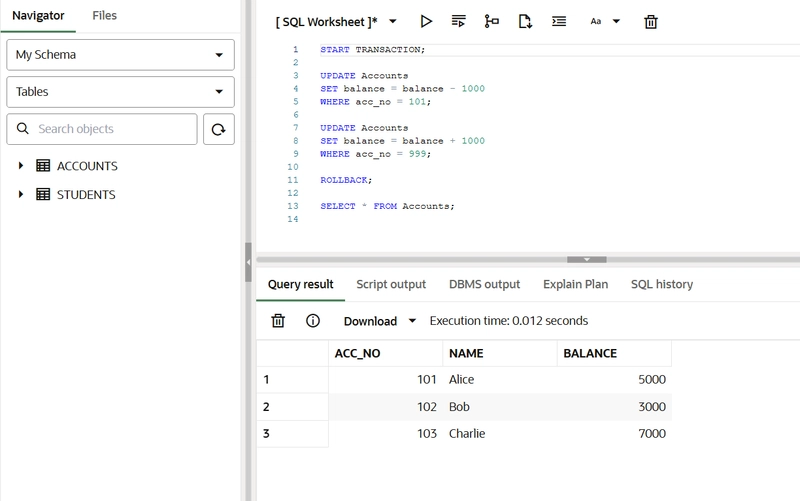ACID PROPERTIES WITH SQL TRNSACTIONS
Step 1: Create the Accounts Table & Insert Sample Data
CREATE TABLE Accounts (
acc_no INT PRIMARY KEY,
name VARCHAR(50),
balance INT CHECK (balance >= 0)
);
INSERT INTO Accounts (acc_no, name, balance) VALUES
(101, 'Alice', 5000),
(102, 'Bob', 3000),
(103, 'Charlie', 7000);
Step 2: Atomicity
Goal: Transfer money from Alice → Bob, but rollback midway to prevent partial update.
START TRANSACTION;
UPDATE Accounts SET balance = balance - 1000 WHERE acc_no = 101;
UPDATE Accounts SET balance = balance + 1000 WHERE acc_no = 102;
ROLLBACK;
SELECT * FROM Accounts;
Expected Result: No changes happen. Alice still has 5000, Bob 3000.
This shows atomicity — either all updates succeed, or none do.
Step 3: Consistency
Goal: Reject invalid state (negative balance).
INSERT INTO Accounts (acc_no, name, balance) VALUES (104, 'David', -500);
Expected Result: Error due to CHECK (balance >= 0).
This preserves data consistency — database rules are enforced.
Step 4: Isolation
Goal: Observe isolation between concurrent transactions.
Session 1:
START TRANSACTION;
UPDATE Accounts SET balance = balance + 2000 WHERE acc_no = 103;
Session 2 (another terminal/session):
SELECT * FROM Accounts WHERE acc_no = 103;
Expected Result:
Depending on isolation level (REPEATABLE READ default in MySQL), Session 2 may not see uncommitted changes.
Session 1 commits → changes become visible.
COMMIT;
This shows isolation — transactions do not interfere unexpectedly.
Step 5: Durability
Goal: Data persists after commit.
START TRANSACTION;
UPDATE Accounts SET balance = balance + 500 WHERE acc_no = 102;
COMMIT;
Restart the database.
Run:
SELECT * FROM Accounts WHERE acc_no = 102;
Expected Result: Bob’s balance is updated permanently. ✅
This demonstrates durability — committed transactions survive crashes.





